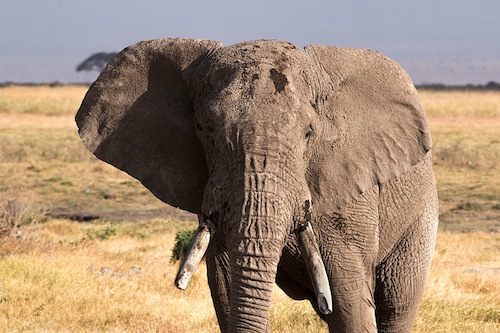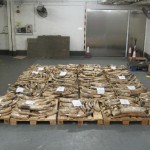
The two African nations of Chad and Tanzania have announced plans to rid themselves of a combined total of 100 tons of confiscated elephant ivory.
Chad has set the date of February 21 for incinerating 1.1 tons of ivory, which has accumulated over the past eight years, according to African Parks.
“The burning of Chad’s ivory stockpile on 21 February will form part of Zakouma National Park’s 50th anniversary event, which will include a commemoration and the unveiling of a monument to the 23 guards slain on duty at Zakouma since 1998. This includes the six game guards who were massacred by Sudanese poachers in September 2012.”
In just one incident in 2013, 86 elephants were massacred in Chad, including more than 30 pregnant females. This tragedy occurred less than a year after Chad’s President sent armed forces into the region where at least 30 elephants were slaughtered.
Tanzania’s ivory burn is set to take place in June 2014. The decision is a bold and significant one for Tanzania, which lobbied unsuccessfully to sell its stockpile at CITES CoP15, and then withdrew another sale proposal ahead of CoP16.
President Jakaya Kikwete told AllAfrica.com that “it is high time the country suspended any plans for selling the ivory stockpile” and that efforts to stop the killing of elephants “would only be realized if there is a total ban on ivory trade throughout the region and the whole world”. The event will be held at the opening of the 2014 Karibu Travel and Tourism Fair in Arusha and the pile (including the country’s stash of rhino horns) will be set ablaze by Minister of Natural Resources and Tourism Lazaro Nyalandu.
At the London Conference on the Illegal Wildlife Trade, Tanzania and Chad were two of four African countries — along with Gabon and Botswana — which committed to a 10-year moratorium on ivory sales.
Prince William has called for all royal ivory to be destroyed — around 1,200 pieces. The bid is commendable, considering his support for the growing number of countries which are destroying their own ivory.
Critics of the increasing movement to destroy ivory stockpiles frequently claim that proceeds from selling such stockpiles could be used for conservation. However, according to CITES expert Susie Watts, there is no evidence to suggest that this “selling ivory to benefit conservation” scheme has ever been successfully executed (Listen to the “Ivory, Transparency and Sustainable Utilization” podcast).
Watts explains that in 1997, when CITES Parties agreed to allow a one-off sale of 44 tons of ivory to Japan, one of the conditions was that sellers were required to report back to CITES on what the funds were used for. But 17 years later, the countries which sold the ivory — Botswana, Namibia, and Zimbabwe — have still failed to report on the ivory proceeds.




